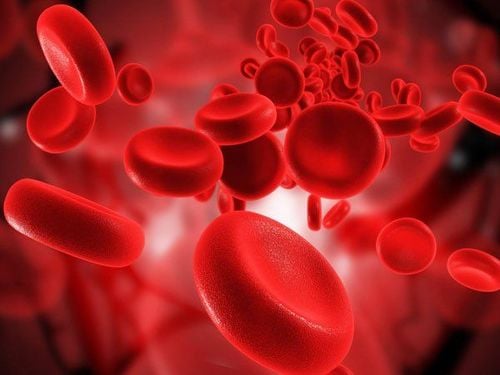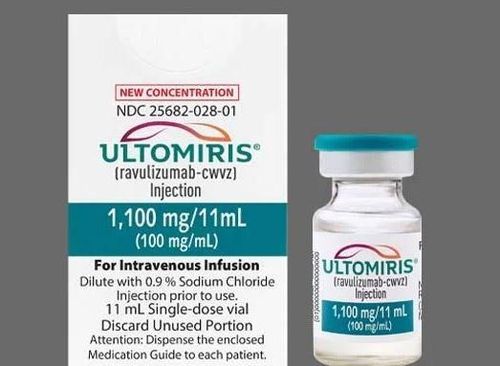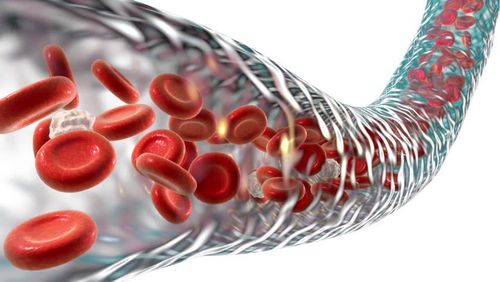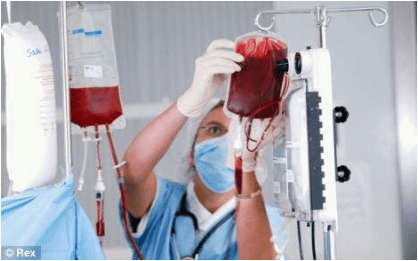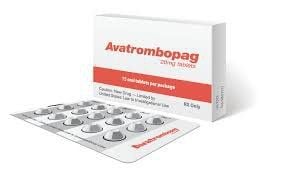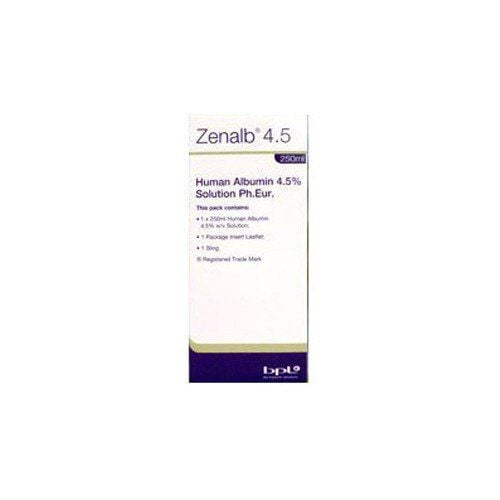This is an automatically translated article.
The production and preservation of blood and blood products need to comply with strict procedures of the Ministry of Health to ensure quality for recipients. Accordingly, each blood product will have a different way of production and storage at different temperatures.
1. Whole blood production and preservation process
Whole blood is blood taken from a blood donor's blood vessel and stored in a bag (bottle) with anticoagulant and blood preservation agent. Accordingly, to preserve blood today, people often use CPDA solutions including citrate, phosphate, dextrose, and adenin. Each unit of 250 ml whole blood has about 30-40 g of hemoglobin. In our country, there are 250ml, 350ml and 450ml blood units. There are also some units with less capacity (50,100,150 ml) for children.
Process of producing and preserving whole blood by: Taking 250 ml of venous blood into a single bag containing 35 ml of anticoagulant, when carrying out the production process, it should be stored in a refrigerator 4-6°C with a time Expiry date is 35 days.
2. Process of producing and preserving red blood cells
Red blood cells are whole blood that has been centrifuged and the plasma on top has been separated into another bag. Depending on the way blood is produced, there are different types of red blood cells, specifically as follows:
2.1. Concentrated erythrocyte mass
Red blood cell concentrate is produced simply by centrifugation, which separates most of the plasma into a separate bag, the rest is a erythrocyte mass with a Hematocrit of about 75%. Red blood cell concentrates are stored at 2 - 6 °C.2.2. Red blood cells with preservative solution
After separating plasma from red blood cells, return the stored solution. Accordingly, the composition of red blood cells with preservative solution includes: red blood cells and preservative solution, few white blood cells, the same amount of hemoglobin as whole blood. Red blood cells with solution stored at 2-6°C for 42 days.
2.3. A mass of red blood cells poor in white blood cells
The leukocyte-poor red blood cell mass is the whole blood that is separated from plasma and separated into Buffy coat components.
2.4. Washed red blood cells
Washed red blood cell mass is whole blood or red blood cell mass that is centrifuged to remove plasma, then replaced with mixed saline and centrifuged again to wash 3 times.
Washed RBCs are stored at + 2 - + 6 °C: 24 hours, at 22 °C : 6 hours
2.5. White blood cell filter and irradiated red blood cell block
Leukocyte-filtered and irradiated red blood cells are red blood cells that have been treated with leukocyte membranes or radiation, or both. Accordingly, this erythrocyte mass is stored from 2-6 °C ≤ 2 weeks from irradiation, if using a removable (open) filter, it should not be left for more than 24 hours after filtration.
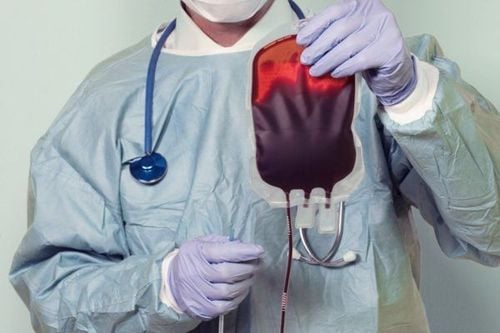
Khối hồng cầu lọc bạch cầu và khối hồng cầu chiếu xạ bảo quản không quá 24 giờ nếu để hở
3. Platelet production and preservation process
3.1. Platelets separated from whole blood
Process of producing platelets separated from whole blood by centrifugation of whole blood bags, decanting the Buffy coast layer and then centrifuging to separate platelets. Normally, 3-4 units of whole blood with the same ABO group can produce 1 unit of platelet pool.
Platelets are stored as follows: If unmixed at 22°C, shake continuously for 3-5 days. If pooled (mixed) through open system for ≤ 24 hours.
3.2. Platelet platelet extract (apheresis)
Platelet extracts are produced by using a cell separator with a specialized kit to collect platelets from a blood donor.
The extracted platelets are stored at 22 °C on a continuous shaker for up to 5 days.
4. Process of producing and preserving fresh frozen plasma
Fresh frozen plasma is plasma that is separated from whole blood within 6 hours from the time of blood collection. Fresh frozen plasma is called fresh frozen plasma.
The amount of plasma separated from a unit of blood currently has a capacity of about 125-150ml. Normally, people usually pool (pool) the fresh plasma of two whole blood units of the same group and the volume is about 250-300ml.
Accordingly, they are stored -25 °C, shelf life 1 year, if kept < - 25 °C can be 2 years.
5. Precipitation production and preservation process
The main precipitate is a portion of fresh plasma frozen at 4 °C and partially dissolved and collected by centrifugation.
Precipitation components include: VIII concentration of about 2-3 units/ml, Factor V, Fibrinogen.
The process of storing precipitates is similar to storing fresh frozen plasma, they are stored at -25 °C, shelf life 1 year, if kept < - 25 °C can be 2 years.
6. Process for production and storage of fresh precipitated plasma
The fraction of plasma separated after collection in fresh frozen plasma can be stored again - 25°C. The composition of fresh plasma that has been precipitated includes: Albumin, some globulins, some clotting factors (factor IX).
The procedure for storing fresh precipitated plasma is similar to that of fresh frozen plasma, they are stored at -25 °C, shelf life 1 year, if kept < - 25 °C can be 2 years.
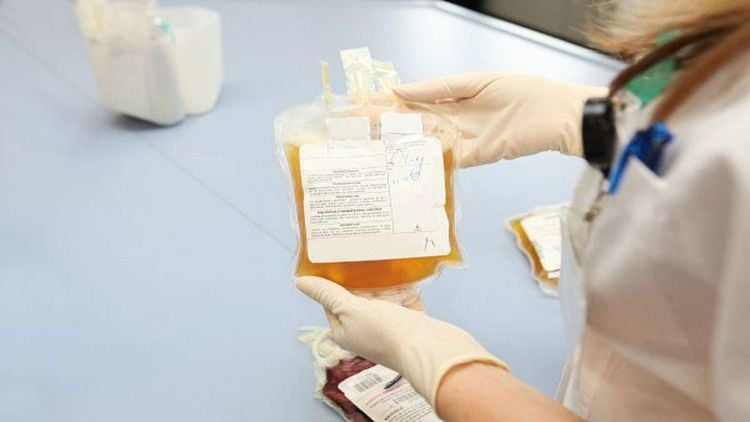
Huyết tương tươi đã tách tủa có thời hạn 1 năm - 2 năm
7. Process of producing and storing frozen plasma
Frozen plasma is the fraction of plasma separated from whole blood but separated 6 hours after blood collection and left to - 25 °C. Frozen plasma contains components that are plasma factors, unstable clotting factors.
The procedure for storing frozen plasma is similar to that of fresh frozen plasma, they are stored at -25 °C, shelf life 1 year, if kept < - 25 °C can be 2 years.
8. Process of manufacturing and preserving other preparations
In addition to the above production process of blood and blood products, other products are preserved and produced as follows:
Granulocytes are separated from the Buffy Coast and pool of many blood donors and stored: 22 °C, ≤ 24 hours. Virus-inactivated plasma products use chemicals or ultraviolet light to inactivate the virus. Factor VIII concentrate: virus inactivation and multi-donor concentrate. Blood is a “special medicine” that many people can donate. Therefore, blood donation has been considered a humanitarian act and is organized in many medical facilities across the country. After the blood donor performs the examination and meets the requirements, the medical staff will collect and put the blood into the production process, preserve and use it for the right purpose for the recipient.
Vinmec International General Hospital has implemented the regulation of blood transfusion in the emergency and treatment of obstetric diseases, surgery, emergency trauma,... Accordingly, the use of blood and preparations from blood follow a standard, closed and strict process to ensure maximum safety for blood recipients. In particular, the procedures for receiving, storing and assigning blood transfusions are well-trained and operated by a team of highly skilled doctors and nurses on modern machinery to provide optimal treatment results. for your customers.
If you have a need for medical examination by modern and highly effective methods at Vinmec, please register here.




